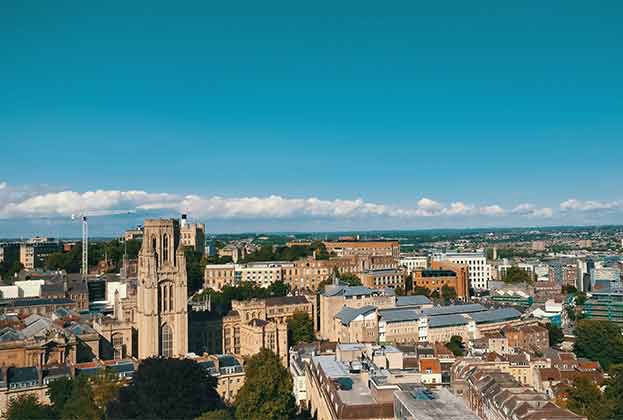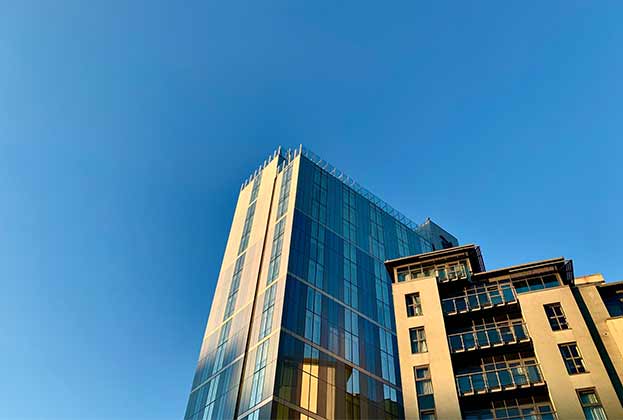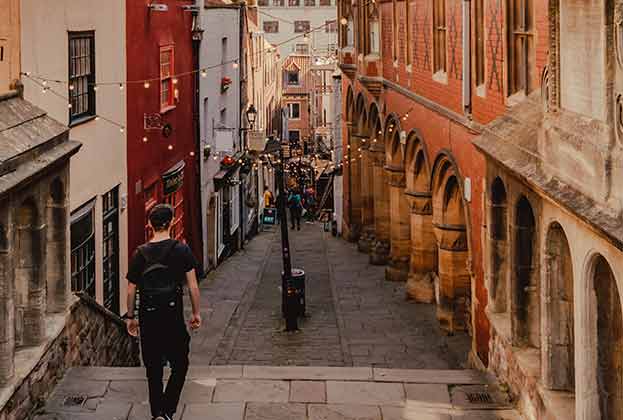Looking ahead, the city requires a mix of housing delivery across all tenures
Bristol needs to deliver 2,368 new homes per year, based on the current method for calculating housing need. The government’s proposed Standard Method 2 (SM2), under consultation, would raise this figure to 2,490 homes. That’s equivalent to 1.2% of the existing housing stock in the district, slightly more ambitious than the 1.1% annual stock increase required across England as a whole.
Bristol has delivered just over 70% of this proposed need figure on average for the past four years. It has achieved this despite restricted land supply within the city and green belt constraining land in the surrounding area. With the introduction of SM2, Bristol will need to work even harder to increase housing delivery, perhaps by reassessing areas designated as green belt and permitting denser development in the city centre.
A finite resource
Just 60% of housing delivery in Bristol comes from new build homes. The extensive use of permitted development rights (PDR) has fuelled recent housebuilding. In the past five years, conversion to residential through PDR has accounted for 17% of all net additions to dwelling stock in Bristol.
PDR has helped Bristol repurpose its older, less attractive office stock into homes. The supply of vacant offices is finite, however. The number of homes delivered through PDR has consistently fallen year on year as the availability of vacant, cheap offices fall (see chart below).
Recent changes to regulation will also limit Bristol’s ability to rely on PDR for its housing delivery. From 06 April 2021, homes delivered through PDR will be subject to national minimum space standards. These start from 37 sq m for a one-bedroom flat or 61 sq m metres for a two-bedroom flat.
Build to Rent boom
Bristol has become a hub for Build to Rent (BTR) investment. The city is home to 667 completed BTR homes, the 8th highest for local authorities outside London. Including homes under construction or in planning, Bristol’s BTR pipeline is just under 2,000 homes.
The size of schemes is increasing in line with confidence in the sector. Completed schemes had 167 homes on average, compared to 209 homes on schemes under construction and 296 homes on schemes in planning. Hawkins and George at Finzel’s Reach on East Tucker Street is a nationally recognised BTR asset in Bristol, held by leading operator Grainger plc. Grainger let all 194 homes on the scheme in three and a half months, a letting rate of 55 homes per month. The scheme delivered a 7% yield on cost in 2019.
The sales market in Bristol is more active than at any point in the last five years
Savills Research
The sales market in Bristol is more active than at any point in the last five years. Why, then, are developers choosing to build homes for rent rather than for sale? Part of the reason may be the upcoming changes to Help to Buy. From 01 April 2021, only homes under £349,000 will be eligible for the Help to Buy equity loan in the South West and the scheme will be restricted to first-time buyers. For context, 24% of new homes sold in Bristol in the year to August 2020 were above the proposed £349,000 cap. From April 2023, the Help to Buy scheme will end entirely.
With the existing stamp duty holiday due to end on 31 March 2021, Help to Buy wrapping up in 2023 and the UK facing harsher economic climes in the short term, developers will need to consider their routes to market.
They will have to work with lenders to ensure first-time buyers can still access their homes without saving for a deposit for decades. As the Government’s Help to Buy scheme ends, we could see a return to housebuilders running their own schemes.
Developers will also need to consider partnering with institutional investors and social landlords to provide a range of housing types and tenures on their schemes. As the 2018 Letwin Review concluded, we need to deliver across all parts of the market to accelerate housing supply and build the homes the country, and Bristol, needs.
View all of our latest Bristol Cross Sector research here.
Read the articles within Spotlight: Building for Bristol below.
.jpg)



